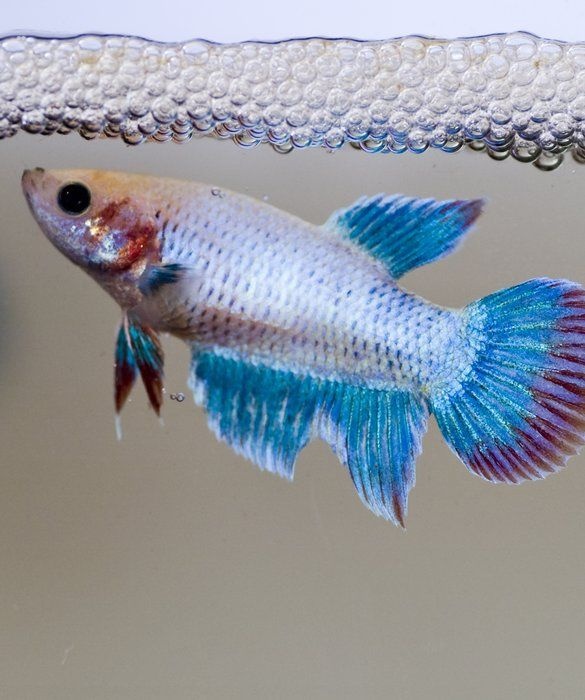If you have a male betta fish, which are also referred to as a Japanese or a Siamese fighting fish, you’re most likely used to periodically seeing clusters of bubbles floating at the top of the fishbowl, which is a betta bubble nest. This implies that your betta is ready to mate. The essential stage in betta courtship is to create a nest of bubbles in which the offspring if there are any. They will grow up until they can swim on their own. The majority of male bettas construct bubble nests. Even if there is no female in the tank. This behavior is a critical indicator of a lively, healthy betta.
Developing the Bubble Nest
Male bettas normally begin making bubble nests as soon as they’re old. And when they’re sufficient to breed, normally between 8 and 12 weeks of age. While out in nature, they first build up their territory through combat with other male bettas. When he stakes out his territory, the betta will start developing the nest by taking gulps of air at the water surface area. Then, he will start spitting out bubbles made out of saliva. He will do this in quick succession, often for hours, till the nest is complete.
Filling the Bubble Nest
When the nest is done, whether in the wild or in a breeding tank shared with a female betta, the next step is courtship. Male bettas are not gentlemen to their prospective mates; they are aggressive pursuers who will not avoid brutality to herd a female beneath the bubble nest. In the wild, he spends his time combating and chasing after male competitors. Also, he deals with a female who is unperceptive to his advances. Once a female remains in place and signals that she’s all set, spawning takes place; the eggs are caught and held by the bubbles in the nest.
Raising the Small Fry
Although he’s not a gentlemanly mate, the male betta is a very good dad, taking sole responsibility for raising the young kids as a single papa. He vigilantly guards the nest up until the eggs hatch one to 2 days after spawning. The young bettas are also called as “fry”, they have unique cells in addition to their bodies that keep them connected to their nest. In the wild, bubble nests deliver and bring in infusorians, which are microscopic organisms that serve to feed the newborn bettas. The fry will stay inside the nest, while being watched over and protected by their father until they are old sufficient to swim away, searching for a more considerable and better meal.
Bubbles and the Single Betta
The instinctual drive to prepare for mating is by developing a strong(enough) bubble nest. Male bettas will generally do this on a frequent basis no matter what, whether they ever have contact with a female. Bubble nests in your singular betta’s fishbowl are a great indication that your betta concerns his tank as his area and is feeling healthy and ready to spawn. In general, the healthier the betta is the more frequently he’ll build a bubble nest. Nevertheless, a lack of bubbles isn’t always brought on my concern. Take note, that if the fish tank has a filter that creates even a small current, this might avoid your betta from nest-building. Not all betta fishes are willing to develop bubble nests regularly.
Do female betta fish make bubble nests?
 Yes, it’s possible and I have actually seen lots of cases. I believe when their egg sac is full, they make bubbles and lay eggs like males, occasionally they collect the eggs and put them in the bubble nest, most of the time they eat them.
Yes, it’s possible and I have actually seen lots of cases. I believe when their egg sac is full, they make bubbles and lay eggs like males, occasionally they collect the eggs and put them in the bubble nest, most of the time they eat them.
Sadly, given that they are not fertilized, they will change into fungal, that you need to remove them to keep the water healthy. I have experienced this throughout the conditioning of betta (only live foods and 25% water alter every day). I provided my bettas a conditioning period for 15 days minimum prior to the next breeding. If such an event happens I offered them another 3 days off and have them breed after that, then effective breeding happens.

